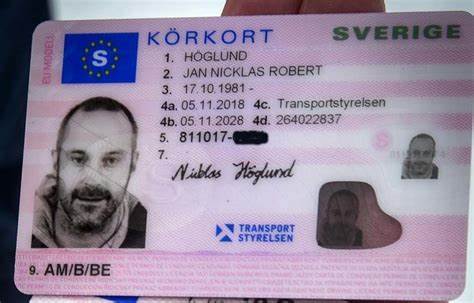넷프로 NETPRO
자유게시판
서브게시판내용
Check Out: How Swedish Driving License Online Is Taking Over And What …
서브게시판정보
작성자 Bernd 댓글0건 25-04-19 12:16관련링크
본문

Navigating the World Without a Driver's License: Exploring Alternatives and Implications
In today's world, where movement is a cornerstone of life, the concept of living without a driver's license may appear difficult. However, for some individuals, the decision to pass up a driver's license is a mindful choice driven by different aspects, consisting of environmental issues, expense, and personal choice. This short article dives into the alternatives to driving and the implications of living without a driver's license, offering a comprehensive guide for those considering this lifestyle.
Understanding the Decision
Choosing not to have a driver's license is a personal decision that can stem from a number of factors. For some, it's a dedication to minimizing their carbon footprint and promoting sustainable living. Others find the expense of owning and maintaining a lorry prohibitive, while some merely prefer the benefit and flexibility of other modes of transportation. Regardless of the inspiration, living without a driver's license requires careful preparation and a willingness to adjust.
Alternatives to Driving
Mass transit
- Buses and Trains: Public transport systems, such as buses and trains, are typically the most reliable and cost-efficient options. They are accessible in a lot of metropolitan areas and supply a structured method to navigate cities and rural areas.
- Subway and Light Rail: In bigger cities, subways and light rail systems provide fast and efficient travel, frequently bypassing heavy traffic and minimizing travel time.
Ride-Sharing Services
- Uber and Lyft: These popular ride-sharing apps offer on-demand transportation, making it easy to get around without a car. They are particularly helpful for late-night travel and in locations with restricted public transport.
- Carpooling: Joining or forming carpool groups can lower costs and ecological impact. Lots of community platforms and apps help with carpooling for regular commutes.
Bikes and E-Scooters
- Bikes: Cycling is a healthy and eco-friendly way to take a trip, specifically for much shorter ranges. Numerous cities have actually committed bike lanes and bike-sharing programs to motivate this mode of transportation.
- Electric Scooters: Köpa A1 Körkort Online vårt C-köpa svenskt körkort Göteborg [https://digiprom.Center/] E-scooters are a stylish and convenient option for quick, brief trips. They are often available through rental services in urban locations and can be a fun alternative to standard modes of transport.
Walking and Jogging
- Strolling: For those living in walkable neighborhoods, strolling is a simple and efficient way to stay active and get around. It's complimentary, requires no unique devices, and benefits the environment.
- Jogging: Similar to strolling, running can be a healthy and low-cost way to take a trip, specifically for short ranges.
Electric and Hybrid Vehicles
- Electric Scooters and Bikes: For those who still desire the benefit of a personal automobile but are concerned about the environment, electrical scooters and bikes are a viable option. They are low-maintenance and produce less emissions.
- Hybrid Cars: If the decision to avoid a driver's license is mostly due to environmental issues, however the requirement for a car is inescapable, hybrid automobiles provide a middle ground. They integrate conventional gasoline engines with electrical motors to minimize fuel intake and emissions.
Telecommuting and Remote Work
- Work from Home: Many companies now use remote work options, allowing employees to work from home or other locations. This can significantly reduce the need for everyday commuting and the associated costs.
- Virtual Meetings: Technology has actually made it possible to conduct business conferences and other interactions virtually, further decreasing the requirement for travel.
Ramifications of Living Without a Driver's License
Financial Savings
- Decreased Vehicle Costs: Not having a car means preventing expenses such as car payments, insurance coverage, upkeep, and fuel.
- Public Transportation Costs: While mass transit does have costs, they are normally lower than those related to owning a car.
Environmental Impact
- Lower Carbon Emissions: By avoiding using individual automobiles, people can significantly reduce their carbon footprint, adding to a more sustainable environment.
- Lowered Traffic Congestion: Fewer automobiles on the roadway can lead to decreased traffic congestion, making travel more effective for everyone.
Health Benefits
- Increased Physical Activity: Using options like strolling, running, and cycling can improve physical health and psychological wellness.
- Lowered Stress: Avoiding the daily inconveniences of driving, such as traffic and parking, can result in a more relaxed and stress-free lifestyle.
Social and Community Engagement
- Community Connections: Relying on public transportation or ride-sharing services can cultivate a sense of neighborhood and social interaction.
- Support for Local Businesses: Walking or cycling to regional companies can assist support the regional economy and reduce reliance on large, environmentally unfriendly corporations.
Legal and Practical Considerations
- Recognition Issues: In lots of nations, a driver's license functions as a main kind of recognition. Individuals without a license might need to bring alternative types of ID, Köpa C Körkort Online köpa en taxilicens online utan tentor taxilicens online utan tentor (rst-motors.ru) such as a passport or state-issued ID card.
- Travel Restrictions: Without a driver's license, travel to remote locations or places with minimal public transport can be challenging. Planning ahead and using alternative transportation approaches is important.
Frequently asked questions
Q: How can I get around if I reside in a rural location without a driver's license?
- A: In rural areas, choices like ride-sharing services, carpooling, and public transport may be restricted. Think about signing up with neighborhood groups or online platforms to discover local carpooling alternatives. Electric scooters and bikes can likewise be helpful for shorter distances. In addition, lots of backwoods have community transportation services that can be accessed for necessary trips.
Q: Can I still travel globally without a driver's license?
- A: Absolutely. A driver's license is not needed for a lot of international travel. However, you may require a passport or other forms of recognition. For nations where driving is required, you can rent a car with a valid driver's license or usage local transport services.
Q: What are the very best apps for discovering ride-sharing and carpooling choices?
- A: Popular apps for ride-sharing include Uber, Lyft, and Bolt. For carpooling, Waze Carpool, Ridester, and Scoop are extremely recommended. These apps typically provide real-time info on available rides and help connect you with chauffeurs heading in the same direction.
Q: How do I manage without a driver's license if it is required for many types of recognition?
- A: In numerous locations, a state-issued ID card or a passport can function as a main form of identification. It's also a great idea to carry several kinds of ID, such as a charge card or a citizen registration card, to guarantee you are prepared for different situations.
Q: Are there any health dangers related to using mass transit?
- A: While mass transit can expose individuals to a greater threat of contagious diseases, particularly in crowded conditions, the benefits frequently surpass the risks. Practicing great health, such as cleaning hands frequently and wearing a mask, can help mitigate these dangers. In addition, many public transport systems have implemented precaution to safeguard passengers.
Q: What are the environmental benefits of not driving a car?

- A: Not driving a car can significantly reduce your carbon footprint. Cars and trucks are a major source of greenhouse gas emissions, and by deciding for public transport, biking, or walking, you can contribute to a much healthier environment. This likewise helps in reducing air pollution and traffic jam, enhancing overall quality of life.
Living without a driver's license is a practical and typically useful option for many people. By checking out and making use of alternative modes of transportation, one can save cash, lower their ecological impact, and enhance their health and wellness. While there are obstacles, such as navigating recognition and travel problems, the benefits often make the effort worthwhile. Whether driven by individual values or useful factors to consider, the choice to pass up a driver's license can lead to a more sustainable and fulfilling lifestyle.
Additional Resources
- Public Transportation Apps: Transit, Moovit, Citymapper
- Cycling and Walking Apps: Strava, MapMyRide, Google Maps
- Neighborhood Carpooling Platforms: Waze Carpool, Ridester, Scoop
- Remote Work and Telecommuting Tools: Zoom, Microsoft Teams, Slack
By accepting these options, individuals can develop a lifestyle that aligns with their values and needs, adding to a more sustainable and connected world.
Warning: Use of undefined constant php - assumed 'php' (this will throw an Error in a future version of PHP) in /home/comp_product01/public_html/theme/company_product/skin/board/common/view.skin.php on line 135
댓글목록
등록된 댓글이 없습니다.
